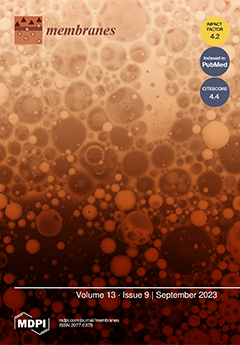At present, the V-Ti-Co phase diagram is not established, which seriously hinders the subsequent development of this potential hydrogen permeation alloy system. To this end, this article constructed the first phase diagram of the V-Ti-Co system by using the CALculation of PHAse Diagrams
[...] Read more.
At present, the V-Ti-Co phase diagram is not established, which seriously hinders the subsequent development of this potential hydrogen permeation alloy system. To this end, this article constructed the first phase diagram of the V-Ti-Co system by using the CALculation of PHAse Diagrams (CALPHAD) approach as well as relevant validation experiments. On this basis, hydrogen-permeable V
xTi
50Co
50−x (x = 17.5, 20.5, …, 32.5) alloys were designed, and their microstructure characteristics and hydrogen transport behaviour were further studied by XRD, SEM, EDS, and so on. It was found that six ternary invariant reactions are located in the liquidus projection, and the phase diagram is divided into eight phase regions by their connecting lines. Among them, some alloys in the TiCo phase region were proven to be promising candidate materials for hydrogen permeation. Typically, V
xTi
50Co
50−x (x = 17.5–23.5) alloys, which consist of the primary TiCo and the eutectic {bcc-(V, Ti) and TiCo} structure, show a high hydrogen permeability without hydrogen embrittlement. In particular, V
23.5Ti
50Co
26.5 exhibit the highest permeability of 4.05 × 10
−8 mol H
2 m
−1s
−1Pa
−0.5, which is the highest value known heretofore in the V-Ti-Co system. The high permeability of these alloys is due in large part to the simultaneous increment of hydrogen solubility and diffusivity, and is closely related to the composition of hydrogen permeable alloys, especially the Ti content in the (V, Ti) phase. The permeability of this alloy system is much higher than those of Nb-TiCo and/or Nb-TiNi alloys.
Full article






